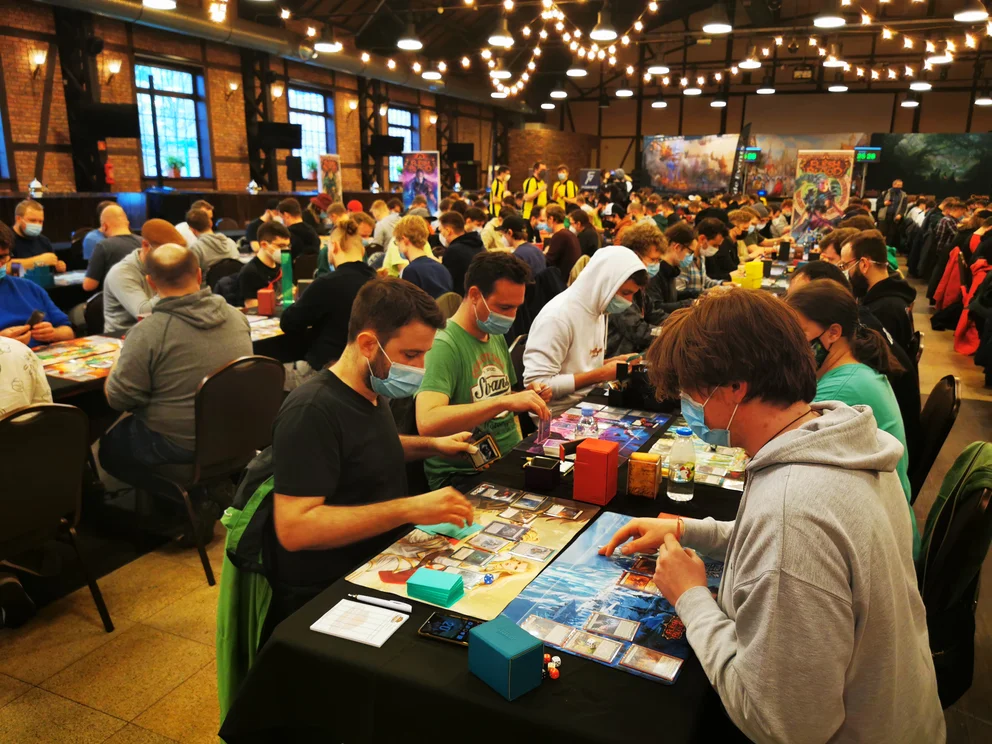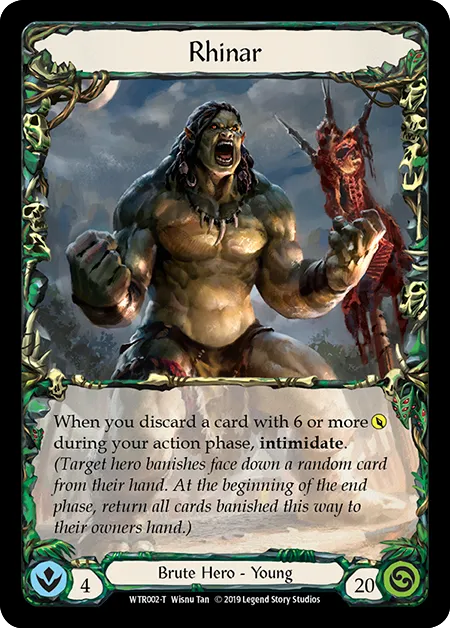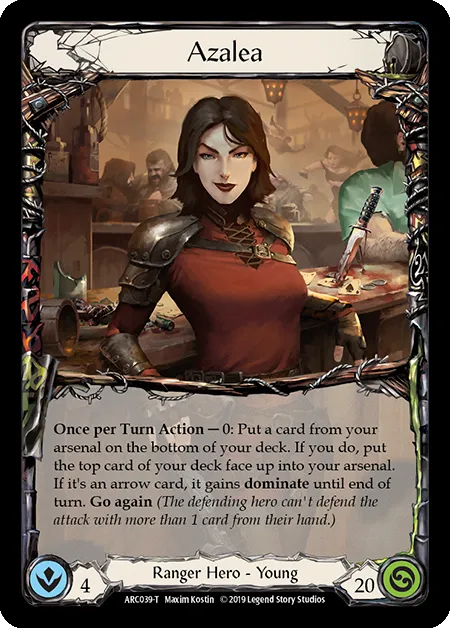We'd like to welcome back guest writer Wesley Lingard to kick off our brand new Jump Start series! Wesley is an Australian player who is aiming to make it to the 2023 World Championship. He has been playing competitive Flesh and Blood since 2020 and has shared his experiences in strategy content on various platforms.
Whether you are a community looking for a new-player-friendly event to host, or a player looking to introduce some friends to the game, you should definitely try out Team Sealed. Team Sealed is an inclusive format that introduces new, fun, and challenging ways of playing Flesh and Blood. What makes it excellent for new players is that it gives players experience in all mechanics of the game, including deck construction and sideboarding, all whilst having the support of one or more team members. Additionally, it doesn’t require players to bring anything with them as it is a limited format. The idea behind the format is that instead of opening six booster packs to make a single deck, as one would do in regular Sealed, the team of three opens nine booster packs and must craft three decks to compete with.
At the moment there is no official web page containing rules for the gameplay format of Team Sealed, so let me guide you through how it works. If you have never played any form of Flesh and Blood Sealed event, I suggest you start with this article here. This article explains to you the regular, single player version of this format, however Team Sealed has some additional rules that you will need to know. To save you some time I have collected the additional rules for Team Sealed in the following list:
- Teams consist of three players. In exceptional circumstances, a team may be made up of two players.
- When teams battle one another, players on the same team must sit besides each other.
- Players must select their seating arrangement at the beginning of the tournament and cannot change seating position during the tournament.
- The player seated in the middle of the team is the team’s captain and is allowed to communicate between the teammates on their left and right during the game.
- Normal deck building rules apply as per regular Sealed events except you will have nine booster packs of cards instead of six and must construct three, thirty card decks.
- Each round teams will be matched against each other according to a Swiss style pairing system, and winning teams are determined by which team got the most wins. If there is a tie, for example one player from each team won and the third set of players ended in a draw, then the whole team receives a draw. Teams of two players automatically lose to the third opponent.
- The entire team shares a sideboard that consists of all the remaining cards from the nine booster packs opened.
Don’t forget that if needed you can add any number of Cracked Bauble cards to your deck to reach this minimum if needed. Also, token cards including heroes and weapons can be added to your deck whether or not you found them in your packs. At the beginning of the event, after teams have been decided, players will be handed their team’s booster packs and deck construction will begin. This is commonly allocated 30 minutes, and team members will need to work together to design three decks with the cards found from their booster packs. Once time runs out for deck construction, players will decide on their team’s seating positions and the first round of the tournament will commence.

A unique advantage that Team Sealed has over other formats is that it can more easily incorporate multiple sets at once. This allows you to experience playing cards from different sets, such as Mauvrion Skies in a Viserai deck, even though it's limited format. Whilst I was in Melbourne for the Australian National Championships, Grand J Games hosted a Team Sealed event where each team received three booster packs of Welcome to Rathe, Arcane Rising, and Crucible of War. My team ended up pulling an Ira, Crimson Haze from one of our Crucible of War booster packs and were allowed to play it as one of our heroes. As Team Sealed is a casual event with an emphasis on fun, cooperation, and community building, stores can easily alter and expand upon the rules to suit their local players. This may include adding in extra booster packs per team, or allowing players to swap heroes during the tournament.
There is a general strategy that will help you get started if your team is confused about how to play this format. First of all, you want to think about who to put in the middle as the team captain. One commonly selected option is to put your most experienced player in the middle.This allows them to guide the other team members during each match as per the rules above. However, if the team has just one new player, you might consider doing the opposite by putting them in the middle seat so that they can get help from both players on their left and right. Another option includes putting your most aggressive deck in the centre so that the captain's game ends first, giving them time to help their team mates. Secondly, you almost always want to run three different heroes with unique classes for your decks. Trying to squeeze in two Fai decks when playing Team Sealed with nine packs of Uprising will leave your group with very watered down decks. The aim is to avoid adding weaker cards to your decks, so by playing separate heroes with different classes you expand your team’s pool of playable cards. Having a larger pool of playable cards generally gives you better options to pick from when putting together your deck. Finally, if your team is struggling to decide on which heroes to build decks for, you can decide by counting the total number of cards you have for each hero and choose the heroes with the largest card pools. Based on the total number of cards we found for each class, my team at the Team Sealed event ended up playing Rhinar, Azalea, and Ira, Crimson Haze.
Being able to play Flesh and Blood alongside friends is an amazing bonding experience. What I loved most about my experience playing Team Sealed was that my friends and I would work together to make decisions for the benefit of the team as a whole. Since your team has a shared sideboard, some interesting decisions can be made after players reveal heroes to their opponents. One thing we discovered was that if one player is matched against an opponent with a Wizard hero, which will likely threaten arcane damage, we could all pass that player our generic equipment with arcane barrier during sideboarding. This ability to shift cards around played an important role in how we would strategise as a team. Unfortunately, our team had a total of three Cracked Baubles across our decks due to the event splitting booster packs between three different sets. This number of Cracked Baubles was quite standard though amongst all teams but we found ways of leveraging it to our advantage. The main strategy we performed was to sideboard these cracked baubles to the player who had the most difficult matchup. Since only two players are required to win their matches for a team to succeed this would help to ensure the victory of the other two players. This method wasn’t always successful but we thoroughly enjoyed passing around our strong generic cards in place of Cracked Baubles and ensured that each team member got chances to wield a powerful deck. However, above all else the enjoyment of the game comes first and when sideboarding keep in mind that no player should be robbed of the opportunity to have fun.
In my opinion, the most challenging yet rewarding part of Team Sealed is deck construction. Having to decide how to divide generics or shared talent cards amongst the team is an exciting puzzle. Each round of the event you get the opportunity to rethink these decisions and try sharing these cards in different ways. This is what enticed me to play in the first place and why I encourage experienced players to join in if they see any Team Sealed events in their local area. Use these events as an opportunity to invite friends who might be interested in trying out Flesh and Blood, and take charge of mentoring your team mates through the deck construction and gameplay as a team captain. Ultimately, the growth of the Flesh and Blood community is beneficial to everyone who enjoys this game. If there aren’t any plans to run a Team Sealed event near you, talk to your local game store and see if it is something they would be happy to host for the local community. All that is needed are some booster packs, a group of fun loving players, and a place to play in the flesh and blood.
I hope that I have encouraged you to expand upon your existing experience of the game and pushed you towards exploring new gameplay formats. All the best with growing your local Flesh and Blood community, and to new players don’t hesitate to wander into your local game store and give this game a red hot go.
Wesley Lingard is a competitive Flesh and Blood player and author of content relating to gameplay and strategy. The opinions expressed in the above article are his own and do not necessarily reflect the views of Legend Story Studios.


